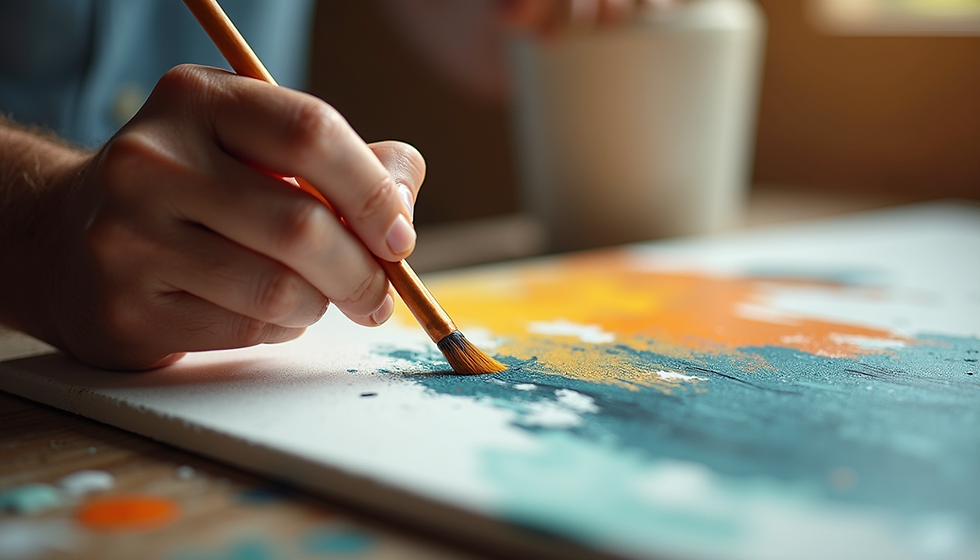Understanding the Process of Submitting Art Successfully
- ArtSloth

- May 20
- 4 min read
Submitting your art can be an overwhelming experience, especially if you're new to the art world. Whether you're aiming for gallery inclusion, an art show, or a magazine feature, the process requires attention to detail and an understanding of best practices. In this guide, we’ll delve into how to submit your art successfully, covering various aspects that can improve your chances of acceptance.
The Importance of Art Submission
Art submission is not just about sending your work to a gallery or an online platform. It's about presenting your artistic vision in a way that resonates with selectors. This process is an opportunity to tell your story through your artwork. Your submission should reflect not only your artistic abilities but also your professionalism.
Being precise in your approach can significantly increase your chances of success. Each submission is unique, and understanding the requirements of each opportunity is crucial.

Know Your Audience
Before submitting your art, take time to research the galleries or platforms you’re interested in. Each one has a specific audience and curatorial focus, which means they look for certain types of art that fit their criteria. Some might favor contemporary pieces, while others may seek traditional artworks.
Research the Submission Guidelines
Once you've identified a venue, carefully read their submission guidelines. Each gallery or platform has distinct rules about the format, size, and thematic focus of works they accept. Many even provide art submission guidelines that detail how to present your portfolio, including the type of images to submit and whether you should include an artist statement.

Preparing Your Artwork for Submission
High-quality images of your artwork are essential when submitting. Here are some steps to follow to ensure your images represent your art accurately:
Lighting: Use natural light whenever possible. Avoid harsh shadows or reflections that could affect how your artwork is perceived.
Resolution: Images should be high resolution (at least 300 DPI) to convey your work’s details effectively.
Editing: Use a photo editing software to adjust brightness and contrast if necessary—but be sure not to alter the colors unnaturally.
Writing an Artist Statement
An effective artist statement is an integral part of the submission process. This document should explain your inspiration, artistic purpose, and the themes you explore in your work. Keep it concise—around 200-300 words—and make sure it aligns with the overall message of your artwork.
Crafting Your Portfolio
Your artist portfolio should showcase your best work. Include a selection of pieces that represents your style, technique, and artistic journey. Quality is far more important than quantity; it's better to have a few strong pieces than a large number of mediocre ones. Aim to present around 10-15 of your best works, showcasing the diversity of your artistic abilities.

Submitting Your Work
Once you have your images and written materials ready, it's time to submit. Follow the submission process outlined by the gallery or platform meticulously. Here are a few key steps to keep in mind:
Format and File Size: Check if they prefer JPEG or PDF for images. Ensure you’re adhering to their specifications for file sizes and dimensions.
Deadline: Make sure to submit your materials before the deadline and double-check all entries for accuracy.
Follow Up: After your submission, it’s okay to follow up within a few weeks if you haven’t received a response. This showcases your enthusiasm but be polite and patient.
Handling Rejection
Rejection is a common part of the art world and can be disheartening. Instead of viewing it as a failure, consider it a learning opportunity. Request feedback if possible—many galleries appreciate artists who seek constructive criticism. Use that information to refine your approach for future submissions.
Building Relationships in the Art Community
Establishing connections within the art community can help you gain visibility and insight. Attend gallery openings, engage with fellow artists, and join local art groups. Networking is not just about promoting yourself; it’s also about supporting others and finding inspiration.
Engaging with curators and other artists can lead to collaborative opportunities and broaden your audience. Over time, these relationships can enhance your profile as an artist and increase your chances of being accepted.
Stay Organized
Keeping track of your submissions is crucial. Use a spreadsheet or a dedicated app to record:
Gallery or platform names
Submission dates
Updates to artist write-ups
Response dates
Feedback notes
Staying organized can help you understand your submission history and refine your approach over time.
Embracing Continuous Learning
The art world is particularly dynamic and always evolving. To be successful, stay updated on trends, techniques, and innovative submission practices. Consider taking workshops, online courses, or attending art fairs to enhance your knowledge base.
Explore different mediums and styles to expand your skill set and discover what resonates with your artistic vision. Continuous learning not only improves your craft but also enhances your resilience as an artist.
Final Thoughts
Submitting your artwork can be a daunting task, but with careful preparation and research, you can navigate this process successfully. Remember to be strategic, professional, and authentic in your approach. Every submission is a step towards growth, regardless of the outcome. Keep creating, keep submitting, and most importantly, believe in your artistic voice. Your art deserves to be seen.
By understanding the intricacies of art submission and refining your approach, you can maximize your opportunities and find success in the wider art world.



